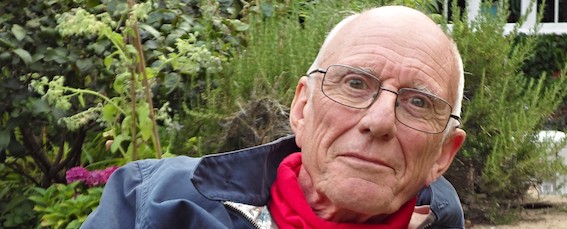Three takes on climate change science
What kind of a beast is climate change? Is it like speeding in a built-up area, puttings cats amongst pidgeons, or stirring jam into custard? Here’s why it matters to know which. (I think it’s either the pidgeon or the custard thing, and that it would be nicer if it were the pidgeon one.)
(1) If adding carbon to atmospshere produces an effect which is like driving a car at 30mph, 40mp or 50mph in a built-up area, then present policy is bang-on. Evidence tells us that every bit of speed (carbon) adds to the danger the drivers (humans) are causing. Every bit of easing of speed produces a good effect, and straight away.
(2) If the effect of adding carbon is like putting cats amongst pidgeons, removing the cats will calm the pidgeons after a bit of a flurry. There may be some dead and mauled pidgeons. In such a case, present policy may be quite effective, though we’d have to wait for the climate to adjust to our removing the anthropogenic cause and that might take a bit of time and some damage may stay done. If AGW is like this, current policy is about right, but likely to be hard to sell.
(3) If the effect of adding carbon is like stirring jam into custard, there’s nothing to be done because we have caused effects which simply can’t be undone. Lots of scientists and alarmists use this argument (listen out for talk of tipping points), though it’s counter-productive to their cause. Sceptics also use this case, but might point out that the analogy is weak because they are saying that though the custard may have gone a funny colour, there’s precious little evidence that man’s jam did it.
These are inexact examples, but are fairly workable. (1) describes a tidy linear system; (2) describes an untidy linear system and (3) describes a non-linear system.
So which is it?
I am an ignorant non-scientist, but here goes with how I jive these takes. I don’t think the climate is like (1) but I wish it were because then the results of policy would be neat, proportionate and immediate. Speed kills. Yes, walking pace would be great. Decarbonise as much as you can.
However, the effects of carbon are complex and not least by being delayed and long-lasting. So the cats and pidgeons thing of (2) is quite apposite to how some scientists see climate change (especially if you factor in the idea of the cats killing some pideons and mauling others). If the climate is quite like (2), and I can imagine that it is, it would be fairly amenable to policy but in a trying way. Human’s don’t like delayed gratification, and anyway the dead pidgeons stay dead don’t they? On the other hand – imperfect analogy – the total, multi-generational pidgeon species might not have have been much damaged by the impromptu cull.
I rather accept that that the climate might be a little like (3) in that there may be some very sudden and unnanounced consequences to AGW which turn out to be permanent and deleterious. Trouble is, if we are on the brink of these changes, then we probably can’t avoid them and if they are catastrophic it’s game-over anyway. But if the effects are pretty survivable, the more all kinds of other changes will mask them and the longer life – including human life – will have to work round them. (The custard goes from yellow to pink, and humans get to like the latter.) In all sorts of ways, case (3) argues for inaction by humans. [Remember, sceptics might not accept that this is a competent analogy though it’s closer to what they think than (1) 0r (2).]
I very much doubt we can predict the detailed effects of what AGW will be so I think it is hard to choose between (2) and (3). I quite like (2). I can imagine that if for some reason our adding carbon has caused a problem (I am not all that persuaded that we can predict that in anything like detail), our removing it might remove the problem, eventually. But I have no idea how many pidgeons will get killed or mauled, so I don’t know how much I care. The catastrophism of (3) has many clever scientific adherents, and I accept they may be right, but the more I think that they may be right, the less I worry.
Point is: unpicking the analogies shows just how hard it will be to make policy stick.
Weaknesses in the analogies
I think (3) is the weakest analogy. It doesn’t do the quite the work I want. I want it to fit the sceptics like Philip Stott and Mike Hulme, but it doesn’t quite. Those who I want to put in that camp actually argue that the climate is infinitely more complex than stirring jam into custard. For a start, they stress that it is important to see that all sorts of natural forces are adding jams of all sorts of colours to the custard. The resulting colourful pudding is plainly not just the result of man’s jam. The analogy is even weaker if you consider that the sceptics don’t so much say that we couldn’t suck out the jam we added, but that we still wouldn’t know what difference that would make and that it would probably be slight.


22/06/10